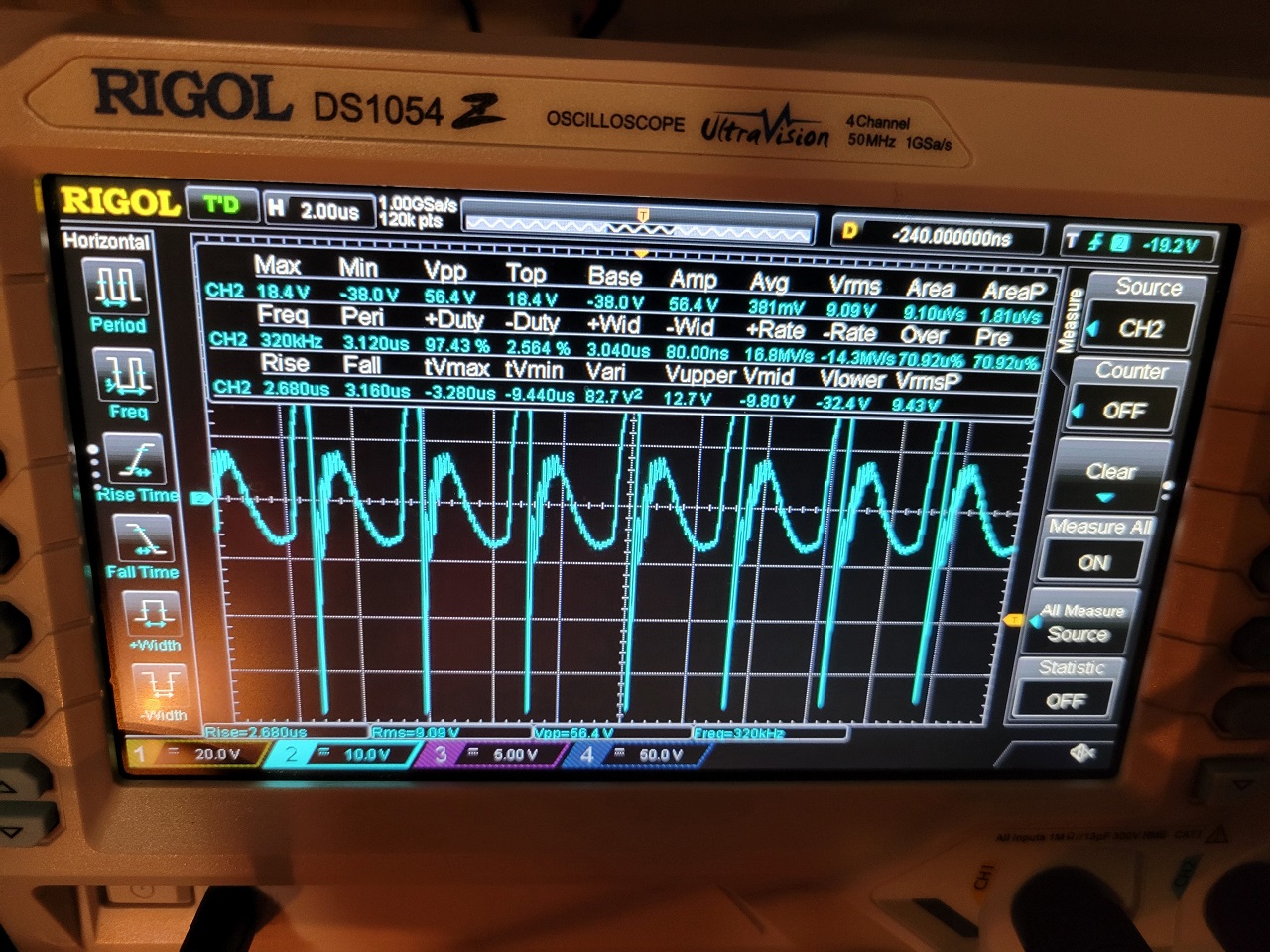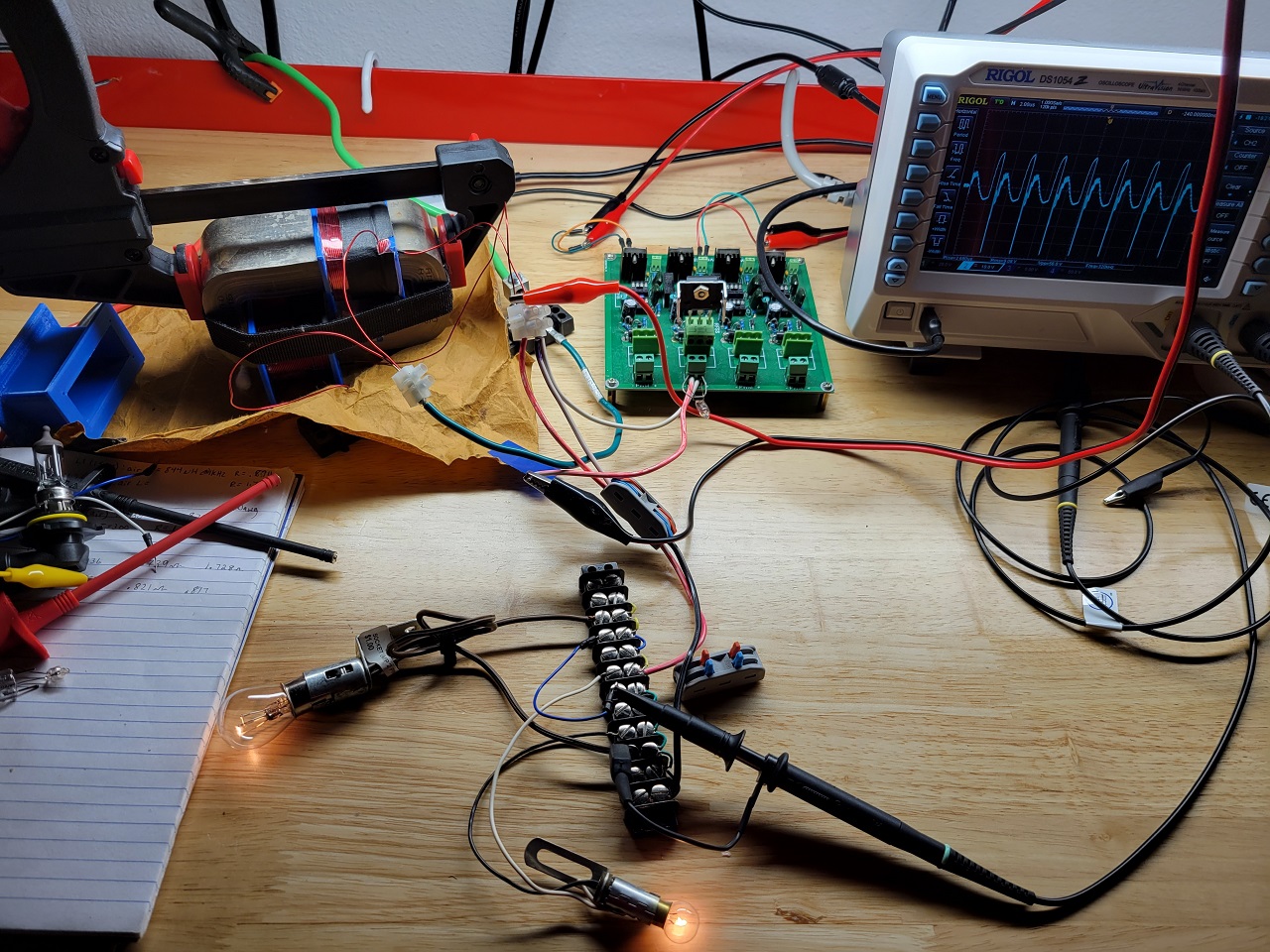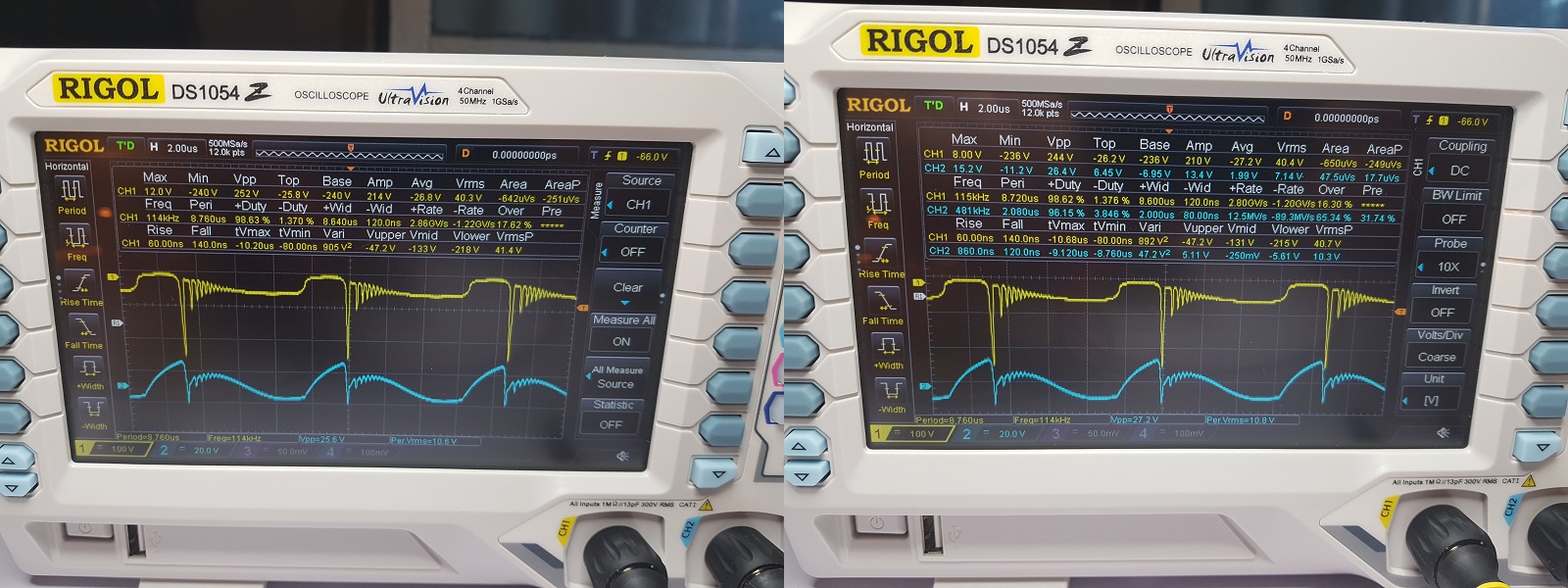Hey everyone, im glad you started a new community, its a shame your device went from "should be first device to replicate after Non-inductive coil" to a toy, to deleted.
300Turn coil : measurements were made with both coils on center of core at 1khz; Coils were then put at far opposite ends of top and bottom of core.
20awg; L = 425mH; DCR = 1.73 ohms
150Turn coil : 20awg; L = 110.7mH; DCR = 0.818 ohms
This is a fast trial run, have more to come with some ideas that may improve opperation. With this configureation I still pull 7 watts of power, so there isn't a whole lot of feedback.
The center tap is connected to cable running to my cars body ground; The scope is connected across load, with its ground on the DRAIN of mosfet. This may be the wrong configuration and reason for not lowering input.
Any pointers are appreciated.





